A reminder of how overcrowded ‘the brand extension graveyard’ is popped into my in-box this week. Thanks to brandgym blog reader Mark James for sharing a CB Insights article (1). It has no fewer than 132 failed brand extensions!
Below I explore some of the learnings from the bad and mad of these failed brand extensions. To do this, I build on the findings from our book on the topic: Brand Stretch: Why 1 in 2 Extensions Fail, and How to Beat the Odds. I also draw on learning from the brand stretch projects we’ve worked on.
You can explore brand stretch further in our brandgym Academy short course here, or as part of our flagship Mastering Brand Growth program: see the the brandgm Academy for the next program dates.

1. Don’t sacrifice a primary benefit for a secondary one
People do literally ‘want it all’ in a brand stretch. They don’t like trading off a primary benefit, such as the taste of french fries, for a secondary one, such as health. This helps explain why Burger King’s Satisfries was one of many failed brand extensions. The french fries might have been a healthier option. However, “execution fell flat, with consumers reporting that they had a tougher outer coating and a drier texture.” (1)
Key action:
Ensure that any brand extension has at least acceptable performance on the primary benefit. For example, before stretching into under-arm deo, Dove invested many years of R&D to ensure it had good odour protection (primary benefit) to complement the secondary skincare benefit it offered.
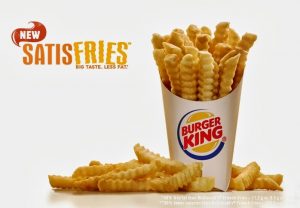
2. Avoid breaking memory structure
Crystal Pepsi was developed to tap into consumer’s interest in purity and health back in the 1990’s. But the drink didn’t catch on. Another of those failed brand extensions. One reason was the breakage in ‘memory structure’. Pepsi Cola is associated with a dark black colour, so a clear Pepsi created confusion. It seems most people still expected a cola taste, whereas in fact it was citrus flavoured.
Key action:
don’t break your brand’s memory structure, build on it, as Pepsi did with the launch of Pepsi Max, offering great taste with no sugar. This variant now accounts for over half of Pepsi’s UK grocery sales.
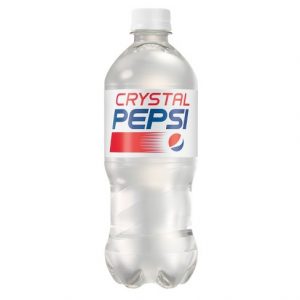
3. Have some ‘sausage’, not just ‘sizzle’
The Amazon Fire Phone was a failed brand extension attempt by the eCommerce giant to enter the huge but highly competitive mobile phone market. This phone might have had some emotional ‘sizzle’ from the association with the Amazon brand. It was acting as an underdog challenger against Apple and Samsung.
However, like many failed brand extensions, the Fire Phone simply lacked product ‘sausage’. “The device turned out to be clunky and have limited app options” (1). This is reflected in the weak benefit communicated in the ad below. It feels like a ‘brand ego trip’: a brand relying on its past reputation as a reason to buy the extension. The proposition was: ‘The first smartphone designed by Amazon”.
Key action:
Don’t rely solely on emotional sizzle when stretching your brand. Ensure you also have some product sausage that brings relevant functional benefits. Amazon did this with the Kindle eReader. This extension seamlessly integrated with the Amazon website for easy ordering and downloading of eBooks. And it has been rejuvenated with a stream of renovation, helping Amazon become the market leader with a 60% share (2)
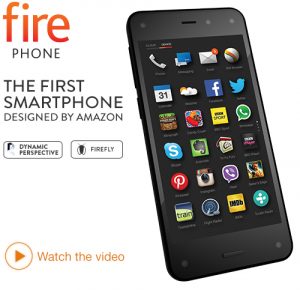
4. Deliver value for money
McDonald’s launched Mighty Wings in 2013 as an attempt to ride the wave of growing demand for lean protein like chicken. However, “the burger giant had 10 million tons of unsold, frozen chicken wings to get rid of after the initial run of the ill-fated product“(1). Value for money seems to have been a key issue, with CEO Don Thompson accepting that prices were “not the most competitive.” (3) The wings came in packs of three for $3.69, five for $5.59, and 10 for $9.69: $1 per wing was pricey at a time when people are watching what they spend (3).
Key action:
Value for money is a key reason for brand stretch failure. So work hard to make your new product or service price competitive and that any price premium is justfiied. Sizing can be one way round this. For example, you can offer a slightly smaller size than your regular product to minimise price per pack premium.
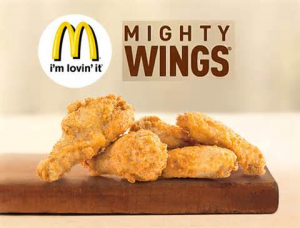
5. Bring relevant brand added value
Key to brand stretch success is entering a market where your brand can bring relevant added value. It’s not enough just to have brand awareness. Rather, the brand needs to ‘bring something to the party’ that competitors don’t currently offer.
Life Savers, the candy brand, created a beverage in the 1980’s that did well in taste tests. However, when Life Savers Soda was launched it flopped in stores and became a failed brand extension. “Consumers thought (the brightly-colored beverage) would taste too much like drinking candy” (1).
Key action:
Ensure your brand brings relevant added value to a new market, such as the Mars brand bringing trust and taste credentials to the chocolate milk market. Mars has helped make chocolate the most popular sector in the UK’s £300m flavoured milk market, with a 30% share, and reported a 3.4% increase in sales value in 2017 (4)
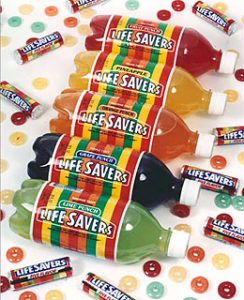
6. Swim with the cultural tide, not against it
Heinz Ez Squirt Ketchup had initial success after its launch in 2000, transforming the traditional red product into a fun, multi-coloured and playful experience for kids. However, the vibrant color hues of EZ Squirt’s were “achieved by stripping the red color from traditional Heinz ketchup and adding food coloring” (5), smimming against the cultural tide: the parents who purchase ketchup were becoming increasingly concerned about naturalness and family health.
As a result, the appeal of artificially created flavours like ‘Blastin’ Green’, ‘Funky Purple’ and ‘Passion Pink’ stated to wane and the novelty wore off, with the product discontinued in 2006. “Parent are wired to believe that ‘fake food is bad food’. If they suspect the product isn’t as healthy as it should be, it will never make it into their shopping carts,” commented a Fast Company article (5).
Key action:
Fully understand the ‘cultural truth’ in your target market, to blend with a ‘brand truth’ and a ‘human truth’. Hellmann’s did this with core renovation to make all its mayonnaise with free range eggs, tapping into cultural issues regarding animal welfare.
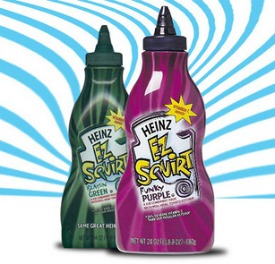
7. Focus where you have ability to win, in the long run
Its one thing to launch a brand extension. Its another thing altogether to have the resources and determination to stay ahead of the competition in the long run, as Nike found out with the Fuel Band. Nike was a pioneer in ‘wearable technology’, launching Fuel Band in 2012 with some initial success.
However, the market become more and more competitive, with direct competition from brands like Fitbit and Jawbone, and indirect competition from smartphones, including Nike’s alliance partner Apple (CEO of Apple Tim Cook has been a Nike Non-Exec director since 2005). Nike struggled to have enough resources to compete effectively. In particular, growth was limited by a failure to offer an Android version until 2014, two and half years after launch (6). And the product’s read-out started to look more and more primitive as the competition moved ahead in leaps and bounds.
The launch of the Apple Watch in 2015 seemed to be the final straw, with Nike closing the Fuel Band business down. Interestingly, Tim Cook of Apple became Nike’s lead independent director a year later, in 2016.
Key action:
focus your brand stretch efforts in areas where you have the long-term ability to win. In the case of Nike, the company has moved away from digital hardware to focus on software and apps, with its ‘Consumer Direct Offense’ strategy that aims “to serve consumers personally, and at scale.” This includes fitness coaching apps for smartphones, and in-store services being launched initially in Nike’s new New York flagship store. A members-only fifth-floor space will offer exclusive products, customization and one-on-one appointments with “Nike Experts” (7).
8. Just plain MAD failed brand extensions!
Finally, there are those brand extensions which are so bad they are mad, and defy belief.
Colgate’s extension into Ready Meals in the early 1980’s is a prime example. It falls down on almost every one of the seven failure factors outlined above.
Indeed, this one is just so plain bonkers that there are even questions now about whether it even actually got launched at all! (the pack below is a mock-up from the Museum of Failure).
Key action:
Don’t do mad s**t !
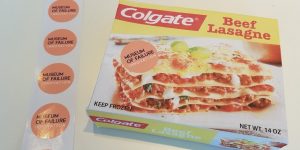
In conclusion, brand stretch is a tricky business. You have a better chance of making money by betting on roulette. At least you have a 50% chance of winning! (an estimated 70% of brand extensions fail). The tips above won’t guarantee success. But they will hopefully reduce your chances of failed brand extensions!
You can explore brand stretch further in our short course here. This short course is only £95+VAT, refundable if you on to do the full Mastering Brand Growth program.
If you’d like more info on the Mastering Brand Growth program, simply pop your name and email in the form below:
And for more thinking on brand stretch, you might want to check out these other posts:
Brand stretch ideas: how to assess them?
Is Tropicana toothpaste a bonkers brand extension?!
Brand stretching based on deep insight: Tena Black
Rocketing for faster and cheaper innovation: brandgym research
A sorry Saga of unsuccessful brand stretching
A Genie helps the AA stretch to grow the core
Bugaboo’s big, bold brand stretching
Bonne Maman’s recipe for category stretch
Coca-Cola’s Signature Mixers core range extension
How Apple’s distinctive design dominated smart watches
Sources:
2. https://www.cnet.com/news/2-big-innovations-that-made-amazon-kindle-ereader-a-success-10th-anniversary/
3. http://www.businessinsider.com/reasons-mcdonalds-mighty-wings-flopped-2013-10?IR=T
4. https://www.scottishgrocer.co.uk/2017/02/demand-for-flavour-fave/
5. https://www.fastcompany.com/1779591/what-were-they-thinking-day-ketchup-crossed-line-perfect-purple
6. https://www.wareable.com/fitness-trackers/not-so-happy-birthday-nike-fuelband-2351
7. https://www.forbes.com/sites/jonathanponciano/2017/12/21/nike-posts-earnings-beat-on-china-sales-growth-and-north-american-slump/#622ecb696a9f
Featured Image: https://www.strategiadesign.com/blog/2017/5/8/how-far-can-your-brand-stretch
